12 Cool-Season Annuals That Brighten Up Gray Days
As winter approaches, many gardens start to look a little bare. Luckily, cool-season annuals are here to add a splash of color during the cooler months. These plants are specially suited for lower temperatures and will keep your garden blooming, even on the grayest days. If you are looking for ways to keep your outdoor space vibrant throughout the season, these plants are a great choice. Read on for the best cool-season annuals to brighten up your garden.
This post may contain affiliate links, which helps keep this content free. Please read our disclosure for more info.
Pansies

Pansies are a favorite cool-season annual known for their bright, cheerful faces. These flowers come in a wide range of colors, from vibrant yellows to soft purples, making them perfect for brightening up any garden. They thrive in cooler weather, making them ideal for fall and early spring planting. Pansies also tolerate light frosts, ensuring they last longer through chilly seasons.
Pansies are easy to grow and maintain, making them a go-to for both beginners and experienced gardeners. They prefer well-drained soil and regular watering to keep them looking their best. When planted in groups, their striking colors create a bold display in flower beds or containers. They are also known to attract pollinators like bees, adding extra life to your garden.
Snapdragons

Snapdragons bring vertical interest and vibrant colors to cool-season gardens. These flowers come in a range of colors, from deep reds to pale yellows, and can grow quite tall, making them a striking feature in flower beds. They prefer the cooler months and thrive when temperatures stay between 50°F and 65°F. Their upright growth habit makes them great for adding height to garden arrangements.
Known for their unique “snap” when squeezed, snapdragons also have a fun element to them. They are relatively low-maintenance and can handle light frosts. Plant them in full sun to part shade with well-drained soil to keep them thriving. Snapdragons can also be used in cutting gardens, as their flowers make stunning bouquets.
Calendulas
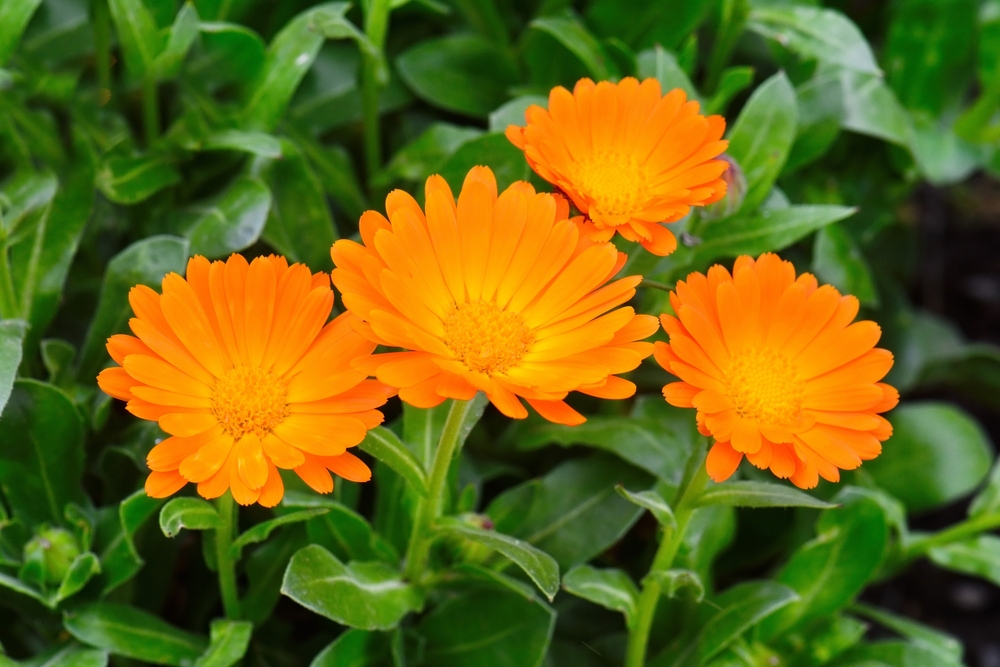
Calendulas, also known as pot marigolds, are bright and cheerful flowers that bloom throughout the cooler months. These annuals are known for their bright yellow, orange, and gold petals, which add warmth to any garden. Calendulas are hardy plants that can tolerate light frosts, making them perfect for fall and early spring displays. They are also easy to grow and require very little maintenance.
These flowers not only brighten up a garden but also have practical uses. Calendulas are often used in herbal remedies and as companion plants to repel pests. They prefer full sun and well-drained soil. Regular deadheading will keep them blooming longer, ensuring your garden stays colorful throughout the season.
Lobelias

Lobelias are small, trailing plants that produce clusters of delicate blue, purple, or white flowers. These cool-season annuals are perfect for hanging baskets, window boxes, or as ground cover. They thrive in cooler temperatures and can tolerate light frosts, making them an excellent choice for early spring and fall gardening. Their cascading growth habit adds softness and movement to any garden display.
Lobelias do well in part sun to full shade and require regular watering to keep their soil moist. They grow best in fertile, well-drained soil and benefit from being fertilized every few weeks. Lobelias are also great for attracting pollinators such as bees and butterflies. With their vibrant blooms and trailing habit, they are an excellent choice for adding beauty to cool-season gardens.
Sweet Alyssum
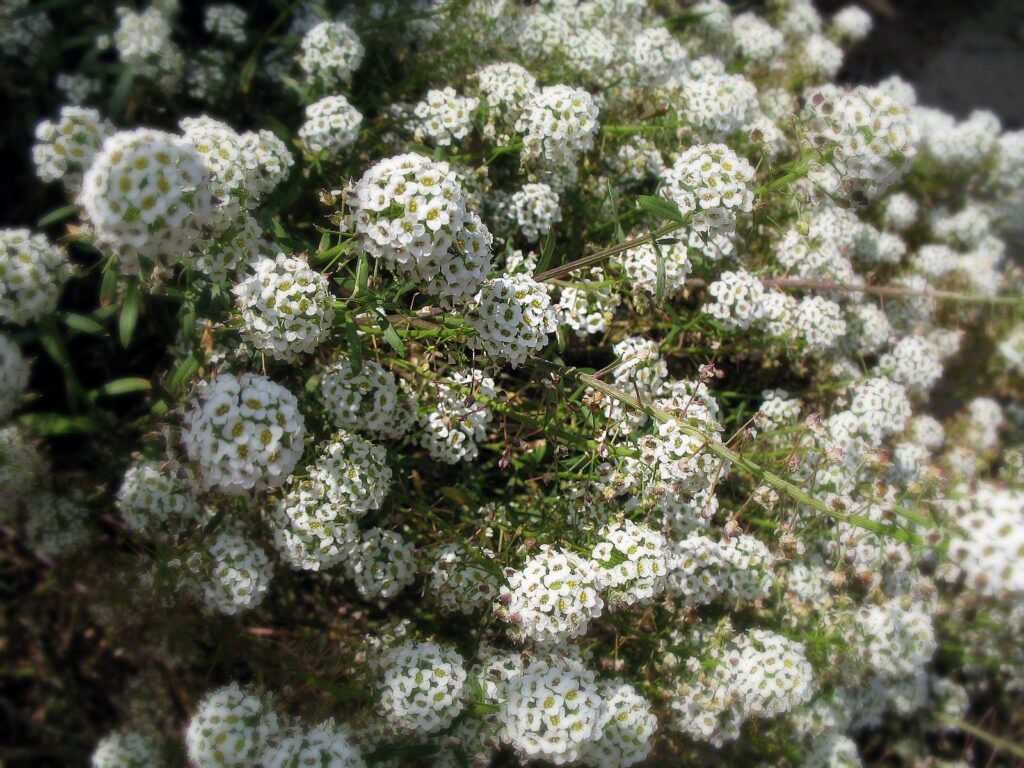
Sweet Alyssum is a low-growing annual with tiny white, pink, or purple flowers that have a pleasant fragrance. This plant is known for its ability to thrive in cool weather and bloom abundantly, even through light frosts. Sweet Alyssum is perfect for filling in gaps in flower beds or creating a soft border along pathways. Its ground-hugging nature allows it to spread quickly, making it ideal for ground cover.
This plant prefers well-drained soil and full sun to partial shade. Sweet Alyssum is also a great option for container gardening. It requires minimal care and does best with regular watering to keep its soil moist. As an added bonus, its sweet scent can attract beneficial insects, adding another layer of life to your garden.
Dianthus
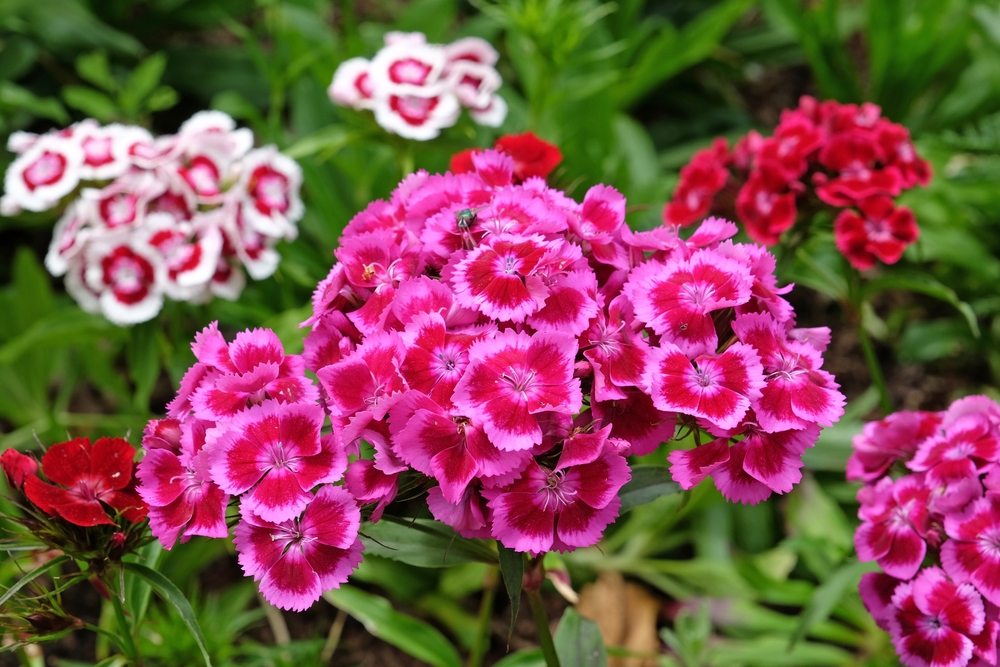
Dianthus, often called “pinks,” are known for their frilly, carnation-like blooms that come in various colors such as pink, red, and white. These hardy annuals thrive in cool weather and are perfect for adding a burst of color to your fall and spring gardens. They grow well in both containers and garden beds, where their compact size makes them ideal for edging or filling in spaces. Their spicy fragrance is also a lovely addition to any garden.
Dianthus prefer full sun and well-drained soil. They can tolerate periods of drought but will thrive with moderate watering. Regular deadheading will encourage continuous blooming, extending their colorful display. These flowers are also attractive to pollinators, further enhancing the biodiversity of your garden.
Dusty Miller
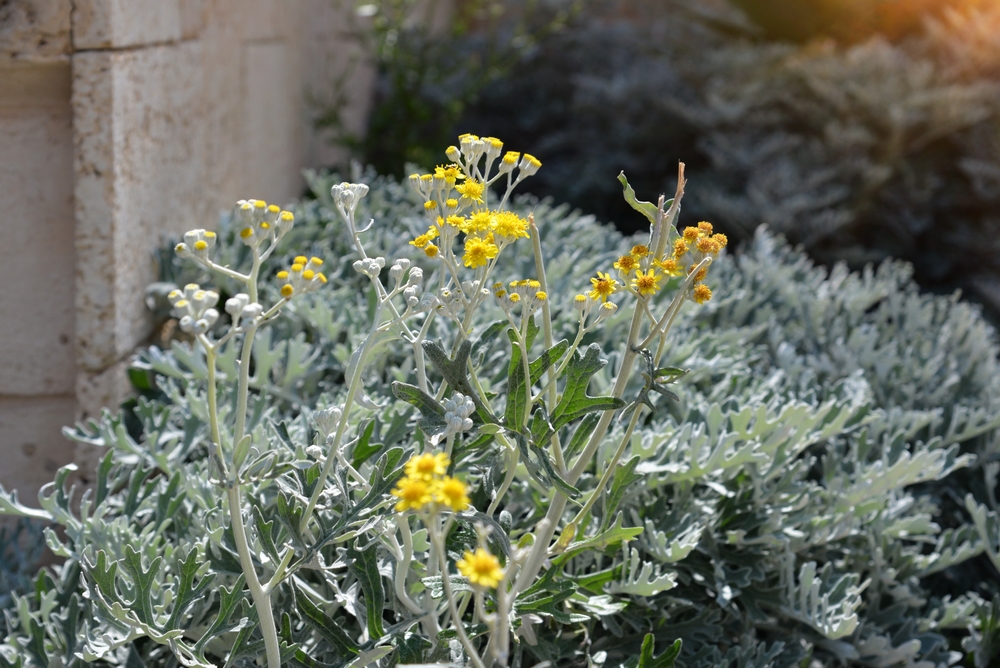
Dusty Miller is a silvery-leaved plant that provides a striking contrast to more colorful blooms in a cool-season garden. Its silver-gray foliage creates a unique texture and adds visual interest to your garden. While it is not grown for its flowers, its striking leaves are perfect for adding depth and contrast to flower beds. Dusty Miller thrives in cool conditions, making it an excellent companion to other cool-season annuals.
This plant grows well in full sun and well-drained soil. It is drought-tolerant and low-maintenance, making it an ideal addition for gardeners looking for a hardy, easy-to-care-for plant. Dusty Miller’s silvery foliage also complements both vibrant flowers and other green plants, making it a versatile choice for garden design. It is often used as a filler plant or border around other more colorful blooms.
Primroses
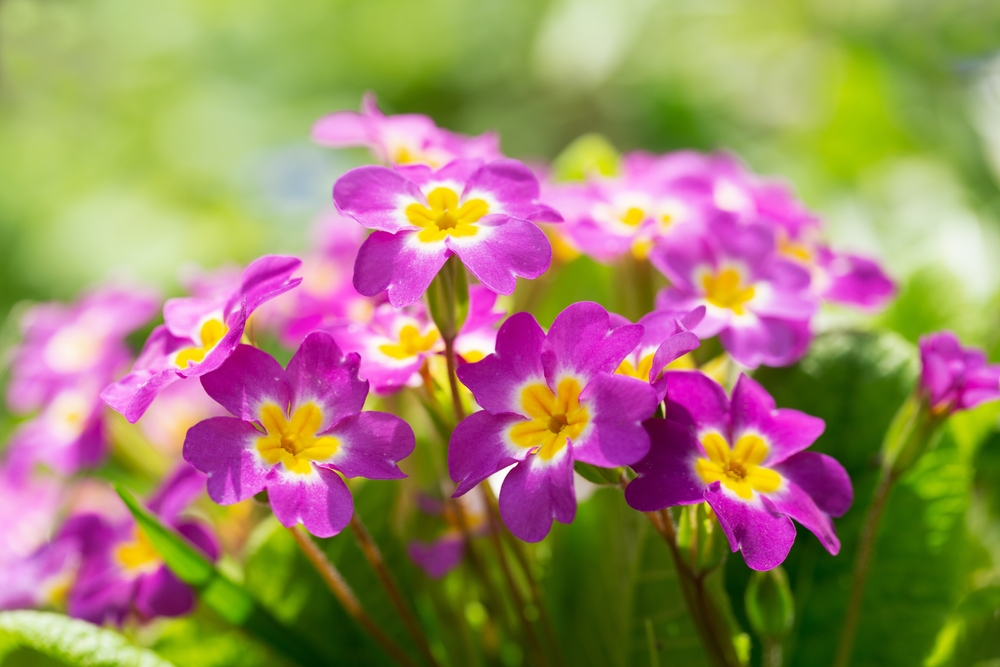
Primroses are a lovely and colorful addition to any cool-season garden, often blooming in shades of yellow, pink, red, and purple. These early-blooming plants are ideal for adding a splash of color to your garden when other flowers are still dormant. They thrive in cooler weather and are particularly well-suited for springtime displays. Primroses are perfect for planting in shaded areas, where they can bring color to darker corners of your garden.
Primroses prefer moist, well-drained soil and moderate watering. They do best in part to full shade and will flower longer if kept cool. These plants benefit from occasional deadheading to encourage more blooms throughout the season. Their compact size makes them ideal for containers or small garden spaces.
Iceland Poppies

Iceland poppies are a stunning addition to any cool-season garden, with their delicate petals in shades of orange, yellow, white, and red. These plants can tolerate cold temperatures and often bloom early in the spring, making them a great option for brightening up your garden during gray days. Iceland poppies have a unique, papery texture that makes them stand out in flower beds and arrangements. They are also known for attracting pollinators like bees, which can add more life to your outdoor space.
These poppies grow best in full sun and well-drained soil. They do not like to be overwatered, so it is important to let the soil dry out between watering sessions. While they are low-maintenance, they do benefit from regular deadheading to encourage continuous blooming. Iceland poppies also make excellent cut flowers, bringing their vibrant colors indoors during the colder months.
Nigella
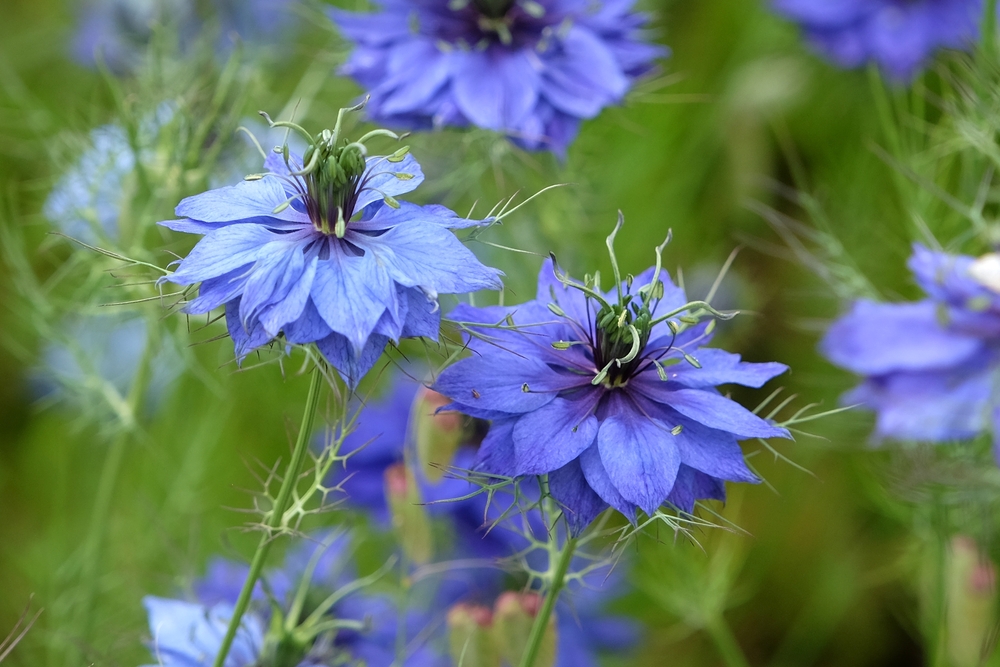
Nigella, also known as “Love-in-a-Mist,” is a charming cool-season annual that adds a whimsical touch to any garden. With delicate, fern-like foliage and unique flowers in shades of blue, white, and pink, Nigella offers both beauty and intrigue. These flowers grow well in cool weather and can even withstand light frosts, making them a great addition to fall and early spring gardens. The flowers’ intriguing, spiky petals and unique seed pods make them a favorite for flower arrangements.
Nigella prefers full sun to part shade and grows best in well-drained, fertile soil. These plants are drought-tolerant once established, requiring only occasional watering. Nigella is easy to grow from seed, making it a great choice for beginners. Their interesting appearance and ability to attract pollinators make them an excellent addition to cool-season gardens.
Sweet Peas
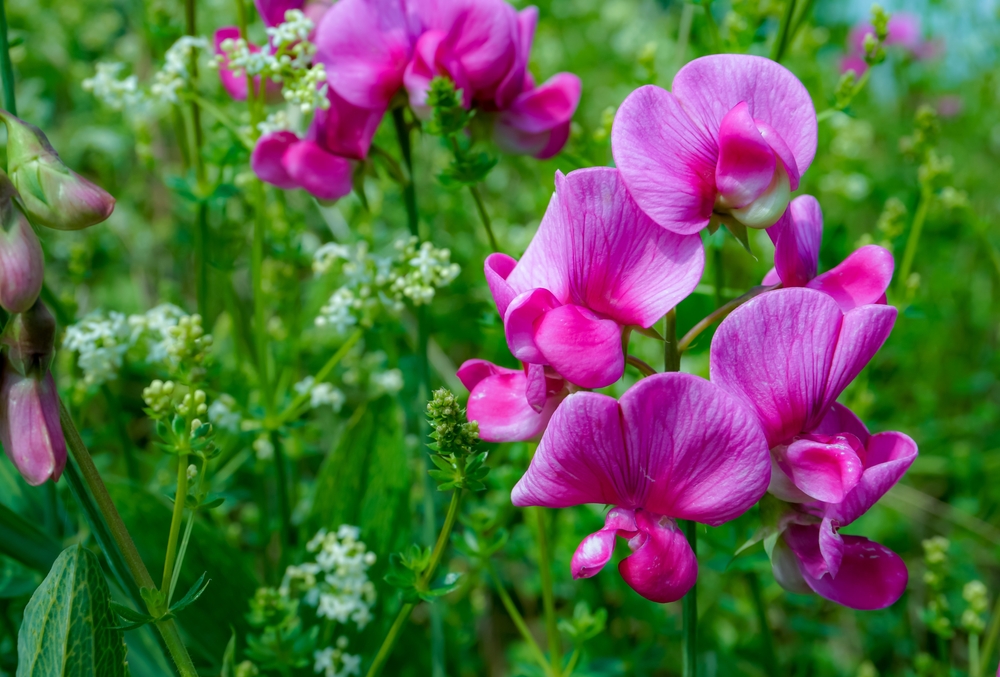
Sweet peas are a classic cool-season annual known for their fragrant, delicate flowers. Available in an array of colors, from pastels to deep hues, sweet peas are perfect for adding fragrance and beauty to your garden. They thrive in cool weather and are particularly suited for spring and fall planting. Sweet peas do well in both garden beds and containers, where they can be grown on trellises or fences.
These plants prefer full sun and well-drained soil. Regular watering is important, especially during dry spells, to keep them blooming. Sweet peas benefit from being cut back regularly to encourage more flowers. Their fragrance and colorful blooms make them a favorite for both gardeners and flower enthusiasts alike.
Cineraria
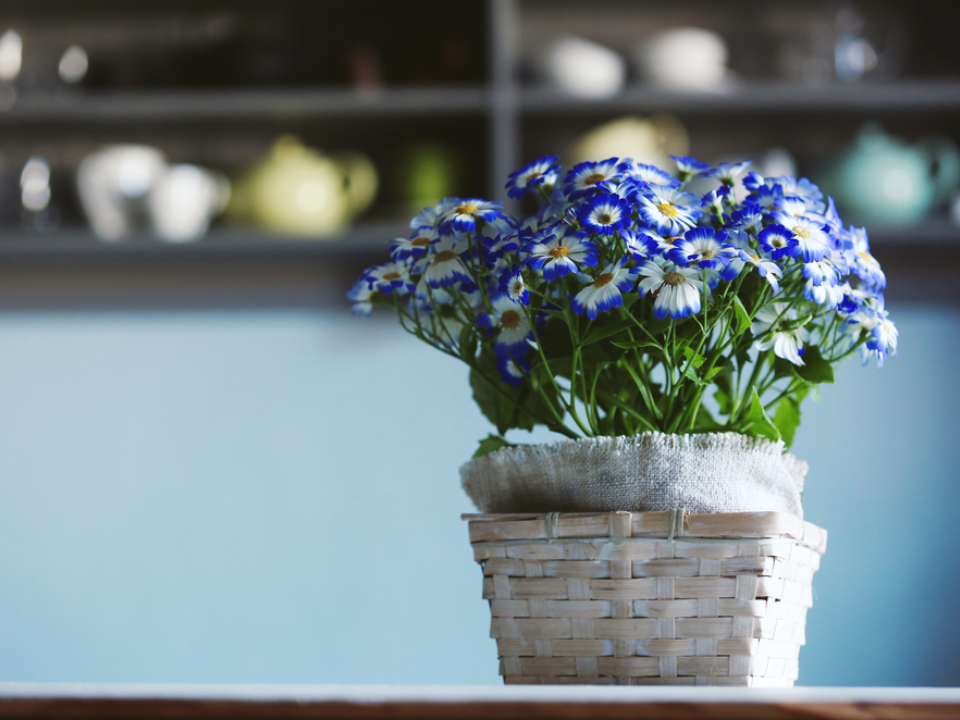
Cineraria is a bright and cheerful cool-season annual known for its vibrant, daisy-like flowers. It blooms in shades of purple, pink, and white, adding a pop of color to your garden during the colder months. Cineraria thrives in cool temperatures, making it a great option for fall and early spring planting. Its compact size makes it perfect for containers, hanging baskets, or the front of flower beds.
These flowers prefer partial shade and moist, well-drained soil. They require regular watering to keep the soil consistently moist but not soggy. Cineraria is also known for its long-lasting blooms, making it an excellent choice for bringing color to gardens with cooler weather. With its vibrant flowers and easy care, Cineraria is a great addition to any garden looking to stay bright through the cooler months.
This article originally appeared on Avocadu.
